Nickname(s) "Amazing Grace" | Name Grace Hopper Role Computer scientist | |
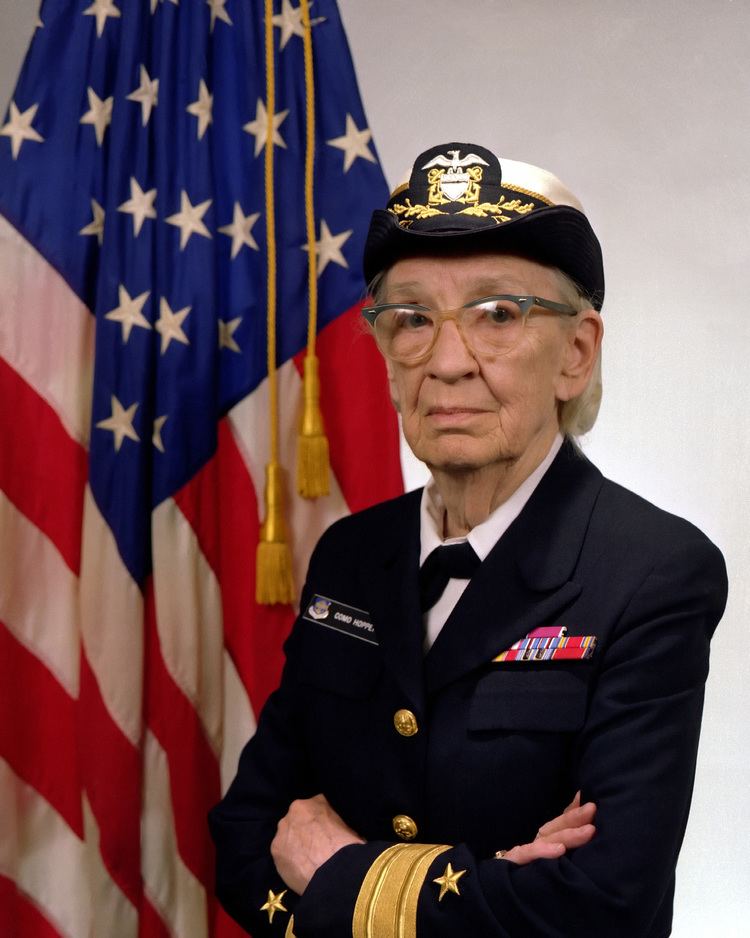 | ||
Born December 9, 1906New York City, New York, U.S. ( 1906-12-09 ) Allegiance United States of America Years of service 1943–1966, 1967–1971, 1972–1986 Died January 1, 1992, Arlington County, Arlington, Virginia, United States Siblings Mary Murray Westcote, Dr. Roger Franklin Murray, II Similar People Ada Lovelace, Anita Borg, Howard H Aiken, Charles Babbage, Alan Turing | ||
Grace hopper computer scientist google doodle
Grace Brewster Murray Hopper (née Murray; December 9, 1906 – January 1, 1992) was an American computer scientist and United States Navy rear admiral. One of the first programmers of the Harvard Mark I computer, she was a pioneer of computer programming who invented one of the first compiler related tools. She popularized the idea of machine-independent programming languages, which led to the development of COBOL, an early high-level programming language still in use today.
Contents
- Grace hopper computer scientist google doodle
- Grace hopper animated computer google doodle
- Early life and education
- World War II
- UNIVAC
- COBOL
- Standards
- Retirement
- Post retirement
- Death
- Dates of rank
- Other awards
- Legacy
- Anecdotes
- Obituary notices
- References
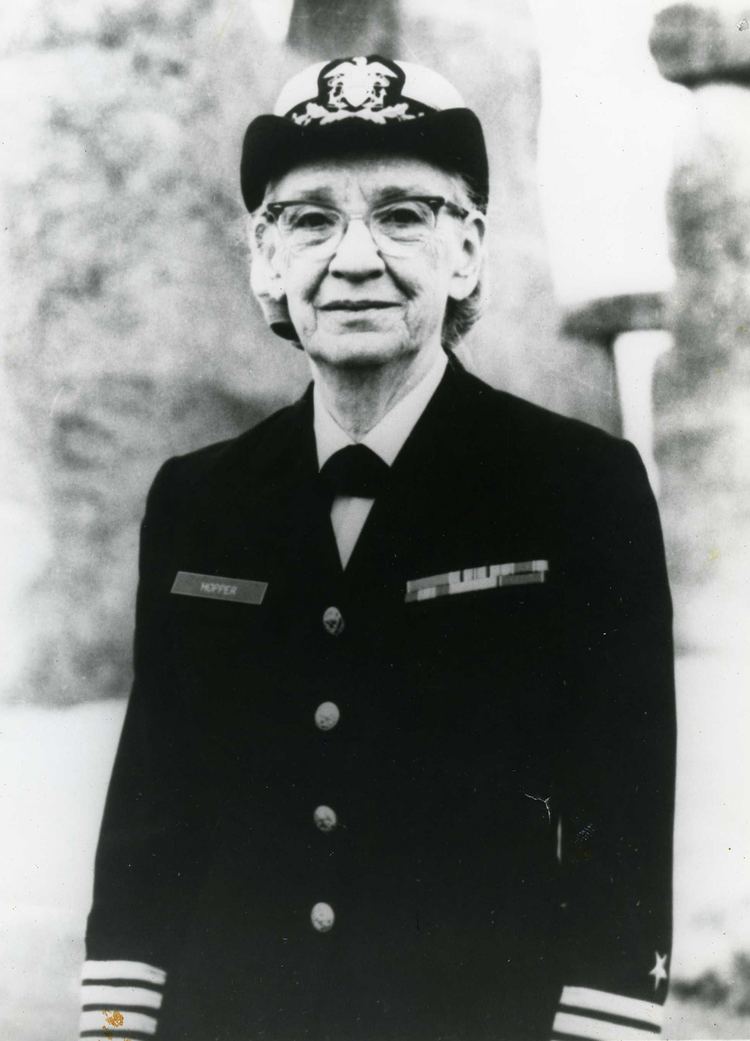
Hopper had attempted to enlist in the Navy during World War II, but she was rejected by the military because she was 34 years of age and too old to enlist. She instead joined the Navy Reserves. Hopper began her computing career when she worked on the Harvard Mark I team that was led by Howard H. Aiken. In 1949, she joined the Eckert–Mauchly Computer Corporation and was part of the development team that designed the UNIVAC I computer in 1944. It was at Eckert–Mauchly that she began developing the compiler. She believed that computer code could be written in English by using a programming language that was based on English words. The compiler would convert that code into machine code that would be understood by computers. By 1952, Hopper finished her compiler, which was written for the A-0 System programming language.
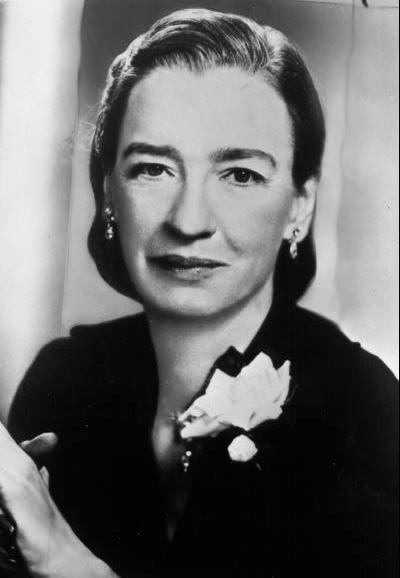
In 1954, Eckert–Mauchly chose Hopper to lead their department for automatic programming, and she led the release of some of the first compiled languages like FLOW-MATIC. In 1959, she participated in the CODASYL consortium, which consulted Hopper to guide them in creating a machine-independent programming language. This led to the COBOL language, which was inspired by her idea of a language being based on English words. In 1966, she retired from the Naval Reserve, but in 1967, the Navy recalled her to active duty. She retired from the Navy in 1986 and found work as a consultant for the Digital Equipment Corporation, sharing her computing experiences.
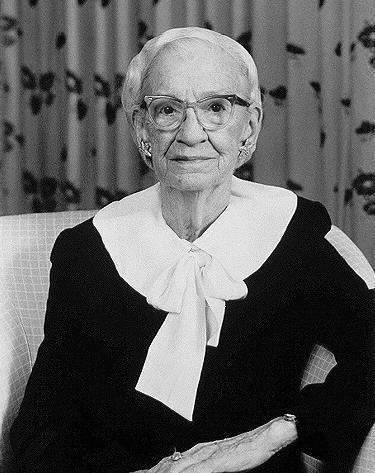
Owing to her accomplishments and her naval rank, she was sometimes referred to as "Amazing Grace". The U.S. Navy Arleigh Burke-class guided-missile destroyer USS Hopper was named for her, as was the Cray XE6 "Hopper" supercomputer at NERSC. During her lifetime, Hopper was awarded 40 honorary degrees from universities across the world. In 1991, she received the National Medal of Technology. On November 22, 2016, she was posthumously awarded the Presidential Medal of Freedom by President Barack Obama.
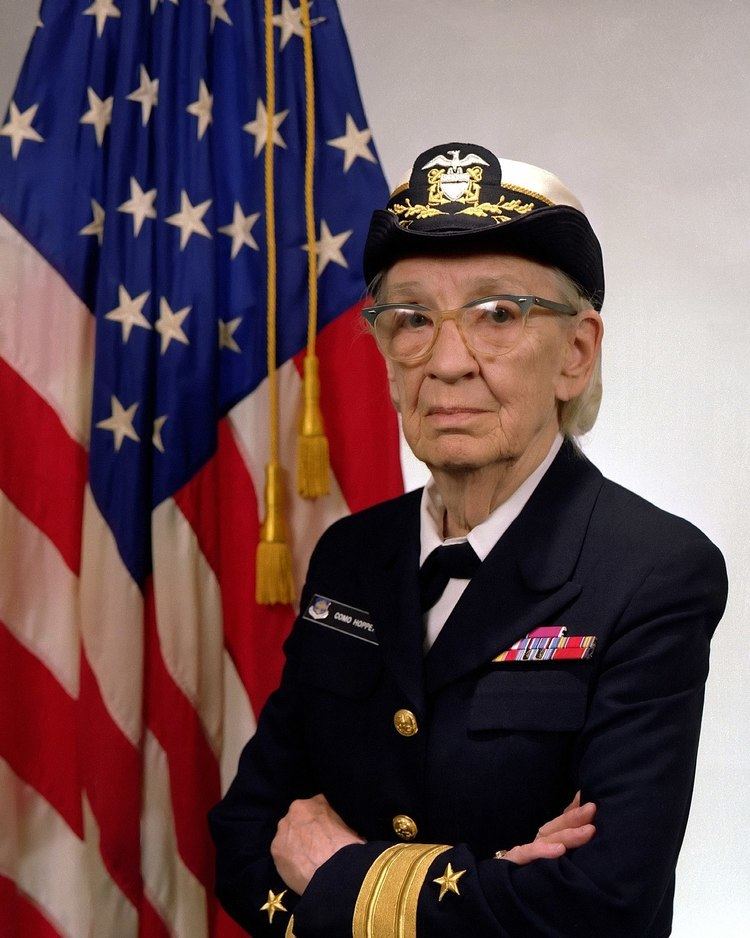
Grace hopper animated computer google doodle
Early life and education
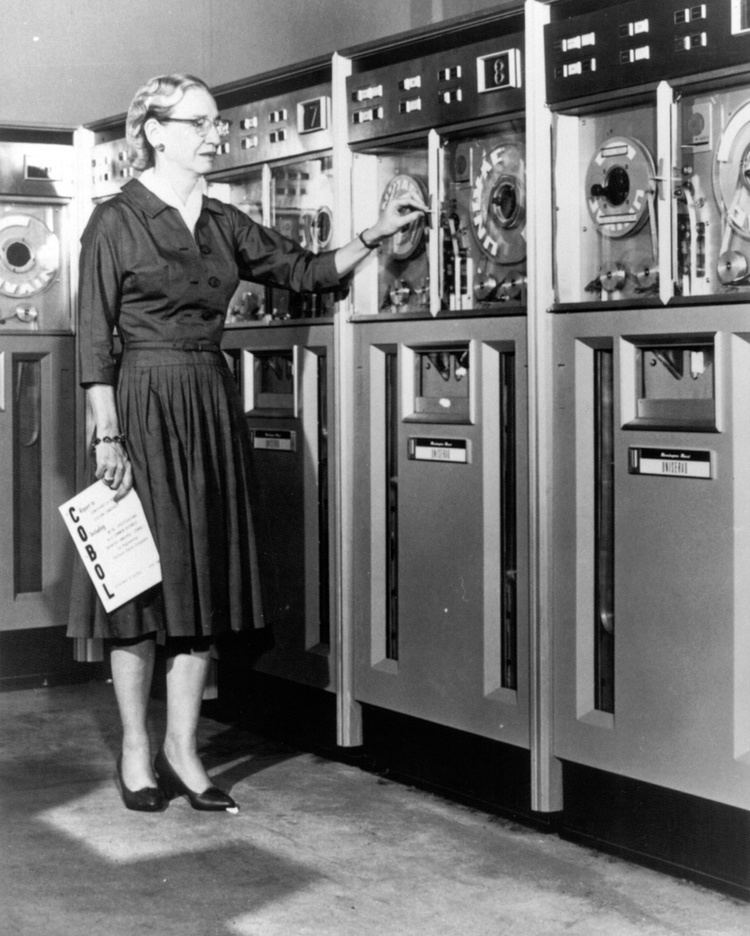
Hopper was born in New York City. She was the eldest of three children. Her parents, Walter Fletcher Murray and Mary Campbell Van Horne, were of Scottish and Dutch descent, and attended West End Collegiate Church. Her great-grandfather, Alexander Wilson Russell, an admiral in the US Navy, fought in the Battle of Mobile Bay during the Civil War.
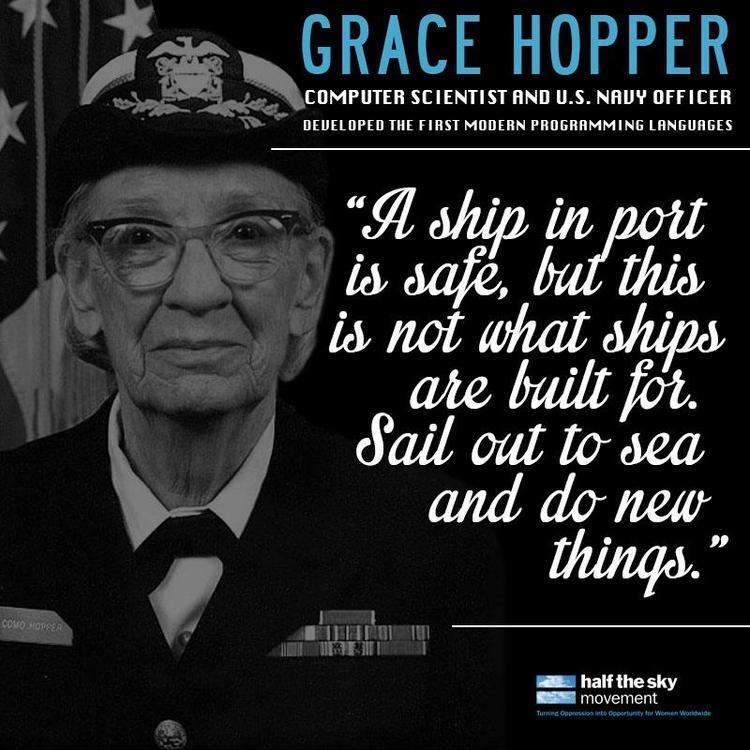
Grace was very curious as a child; this was a lifelong trait. At the age of seven, she decided to determine how an alarm clock worked and dismantled seven alarm clocks before her mother realized what she was doing (she was then limited to one clock). For her preparatory school education, she attended the Hartridge School in Plainfield, New Jersey. Hopper was initially rejected for early admission to Vassar College at age 16 (her test scores in Latin were too low), but she was admitted the following year. She graduated Phi Beta Kappa from Vassar in 1928 with a bachelor's degree in mathematics and physics and earned her master's degree at Yale University in 1930.
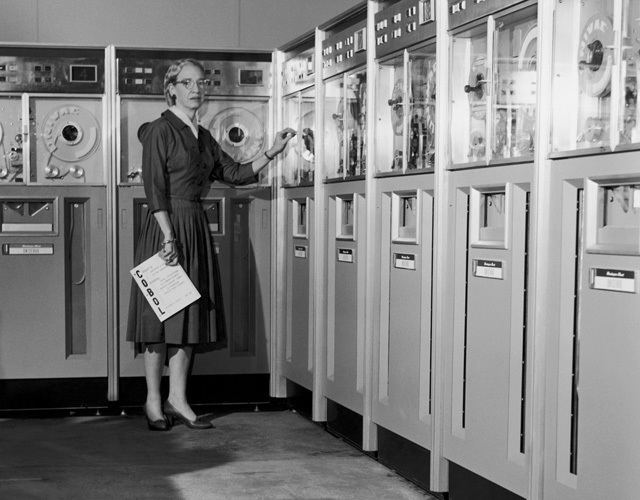
In 1934, she earned a Ph.D. in mathematics from Yale under the direction of Øystein Ore. Her dissertation, New Types of Irreducibility Criteria, was published that same year. Hopper began teaching mathematics at Vassar in 1931, and was promoted to associate professor in 1941.
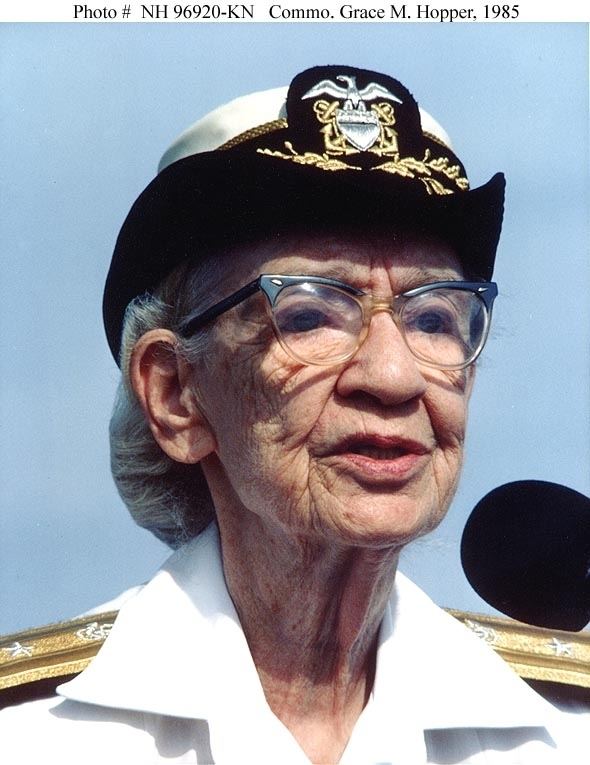
She was married to New York University professor Vincent Foster Hopper (1906–76) from 1930 until their divorce in 1945. She did not marry again, but chose to retain his surname.
World War II
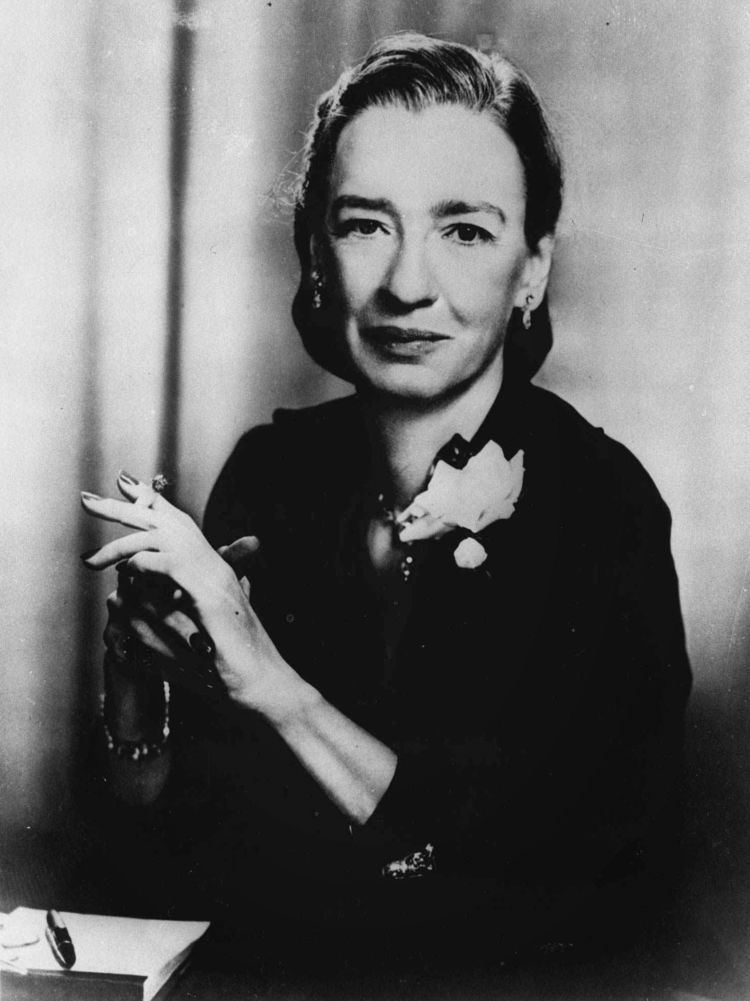
Hopper had tried to enlist in the Navy early in World War II. She was rejected for multiple reasons. At age 34, she was too old to enlist, and her weight to height ratio was too low. She was also denied on the basis that her job as a mathematician and mathematics professor at Vassar College was valuable to the war effort. During the war in 1943, Hopper obtained a leave of absence from Vassar and was sworn into the United States Navy Reserve; she was one of many women who volunteered to serve in the WAVES. She had to get an exemption to enlist; she was 15 pounds (6.8 kg) below the Navy minimum weight of 120 pounds (54 kg). She reported in December and trained at the Naval Reserve Midshipmen's School at Smith College in Northampton, Massachusetts. Hopper graduated first in her class in 1944, and was assigned to the Bureau of Ships Computation Project at Harvard University as a lieutenant, junior grade. She served on the Mark I computer programming staff headed by Howard H. Aiken. Hopper and Aiken co-authored three papers on the Mark I, also known as the Automatic Sequence Controlled Calculator. Hopper's request to transfer to the regular Navy at the end of the war was declined due to her advanced age of 38. She continued to serve in the Navy Reserve. Hopper remained at the Harvard Computation Lab until 1949, turning down a full professorship at Vassar in favor of working as a research fellow under a Navy contract at Harvard.
UNIVAC
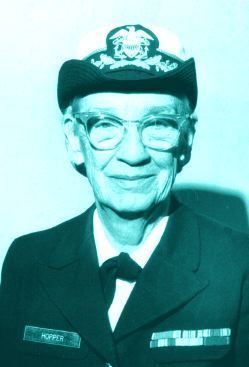
In 1949, Hopper became an employee of the Eckert–Mauchly Computer Corporation as a senior mathematician and joined the team developing the UNIVAC I. Hopper also served as UNIVAC director of Automatic Programming Development for Remington Rand. The UNIVAC was the first known large-scale electronic computer to be on the market in 1950, and was more competitive at processing information than the Mark I.
When Hopper recommended the development a new programming language that would use entirely English words, she "was told very quickly that [she] couldn't do this because computers didn't understand English." Her idea was not accepted for 3 years, and she published her first paper on the subject, compilers, in 1952. In the early 1950s, the company was taken over by the Remington Rand corporation, and it was while she was working for them that her original compiler work was done. The program was known as the A compiler and its first version was A-0.
In 1952 she had an operational link-loader, which at the time was referred to as a compiler. She later said that "Nobody believed that," and that she "had a running compiler and nobody would touch it. They told me computers could only do arithmetic." She goes on to say that her compiler "translated mathematical notation into machine code. Manipulating symbols was fine for mathematicians but it was no good for data processors who were not symbol manipulators. Very few people are really symbol manipulators. If they are they become professional mathematicians, not data processors. It’s much easier for most people to write an English statement than it is to use symbols. So I decided data processors ought to be able to write their programs in English, and the computers would translate them into machine code. That was the beginning of COBOL, a computer language for data processors. I could say “Subtract income tax from pay” instead of trying to write that in octal code or using all kinds of symbols. COBOL is the major language used today in data processing.”“
In 1954 Hopper was named the company's first director of automatic programming, and her department released some of the first compiler-based programming languages, including MATH-MATIC and FLOW-MATIC.
COBOL
In the spring of 1959, computer experts from industry and government were brought together in a two-day conference known as the Conference on Data Systems Languages (CODASYL). Hopper served as a technical consultant to the committee, and many of her former employees served on the short-term committee that defined the new language COBOL (an acronym for COmmon Business-Oriented Language). The new language extended Hopper's FLOW-MATIC language with some ideas from the IBM equivalent, COMTRAN. Hopper's belief that programs should be written in a language that was close to English (rather than in machine code or in languages close to machine code, such as assembly languages) was captured in the new business language, and COBOL went on to be the most ubiquitous business language to date. Among the members of the committee that worked on COBOL was Mount Holyoke College alumni Jean E. Sammet.
From 1967 to 1977, Hopper served as the director of the Navy Programming Languages Group in the Navy's Office of Information Systems Planning and was promoted to the rank of captain in 1973. She developed validation software for COBOL and its compiler as part of a COBOL standardization program for the entire Navy.
Standards
In the 1970s, Hopper advocated for the Defense Department to replace large, centralized systems with networks of small, distributed computers. Any user on any computer node could access common databases located on the network. She developed the implementation of standards for testing computer systems and components, most significantly for early programming languages such as FORTRAN and COBOL. The Navy tests for conformance to these standards led to significant convergence among the programming language dialects of the major computer vendors. In the 1980s, these tests (and their official administration) were assumed by the National Bureau of Standards (NBS), known today as the National Institute of Standards and Technology (NIST).
Retirement
In accordance with Navy attrition regulations, Hopper retired from the Naval Reserve with the rank of commander at age 60 at the end of 1966. She was recalled to active duty in August 1967 for a six-month period that turned into an indefinite assignment. She again retired in 1971 but was again asked to return to active duty in 1972. She was promoted to captain in 1973 by Admiral Elmo R. Zumwalt, Jr.
After Republican Representative Philip Crane saw her on a March 1983 segment of 60 Minutes, he championed H.J.Res. 341, a joint resolution originating in the House of Representatives, which led to her promotion to commodore by special Presidential appointment. She remained on active duty for several years beyond mandatory retirement by special approval of Congress. Effective November 8, 1985, the rank of commodore was renamed rear admiral (lower half) and Hopper became one of the Navy's few female admirals.
Following a career that spanned more than 42 years, Admiral Hopper took mandatory retirement from the Navy on August 14, 1986. At a celebration held in Boston on the USS Constitution to commemorate her retirement, Hopper was awarded the Defense Distinguished Service Medal, the highest non-combat decoration awarded by the Department of Defense.
At the time of her retirement, she was the oldest active-duty commissioned officer in the United States Navy (79 years, eight months and five days), and aboard the oldest commissioned ship in the United States Navy (188 years, nine months and 23 days). (Admirals William D. Leahy, Chester W. Nimitz, Hyman G. Rickover and Charles Stewart were the only other officers in the Navy's history to serve on active duty at a higher age. Leahy and Nimitz served on active duty for life due to their promotions to the rank of fleet admiral.)
Post retirement
Following her retirement from the Navy, she was hired as a senior consultant to Digital Equipment Corporation (DEC). Hopper was initialed offered the job position by Rita Yavinsky, but she insisted on apply for the position at Digital Equipment Corporation, and going through the typical formal interview process. She also sent a letter to Yavinsky's boss explaining that she would be available on alternating Thursdays, receiving a high salary, and have access to an unlimited expense account if she were to be exhibited at their museum of computing as a pioneer. After the proposal from Hopper, she was hired as a full-time senior consultant. As part of her position, she would report to Yavinsky. In this position, Hopper represented the company at industry forums, serving on various industry committees, along with other obligations. She retained that position until her death at age 85 in 1992.
Hopper was a goodwill ambassador in her primary activity in this capacity. She lectured widely about the early days of computing, her career, and on efforts that computer vendors could take to make life easier for their users. She visited most of Digital's engineering facilities, where she generally received a standing ovation at the conclusion of her remarks.
She often recounted that during her service she was frequently asked by admirals and generals why satellite communication would take so long. So during many of her lectures, she illustrated a nanosecond using salvaged obsolete Bell System 25 pair telephone cable, cut it to 11.8 inch (30 cm) lengths, the distance that light travels in one nanosecond, and handed out the individual wires to her listeners. Although no longer a serving officer, she always wore her Navy full dress uniform to these lectures, which is allowed by US Navy uniform regulations.
The most important thing I've accomplished, other than building the compiler, is training young people. They come to me, you know, and say, 'Do you think we can do this?' I say, "Try it." And I back 'em up. They need that. I keep track of them as they get older and I stir 'em up at intervals so they don't forget to take chances.
Death
On New Year's Day 1992, Hopper died in her sleep of natural causes at her home in Arlington, Virginia; she was 85 years of age. She was interred with full military honors in Arlington National Cemetery.
Dates of rank
Other awards
Legacy
Anecdotes
Throughout much of her later career, Hopper was much in demand as a speaker at various computer-related events. She was well known for her lively and irreverent speaking style, as well as a rich treasury of early war stories. She also received the nickname "Grandma COBOL".
Jay Elliot described Grace Hopper as appearing to be "'all Navy', but when you reach inside, you find a 'Pirate' dying to be released".
